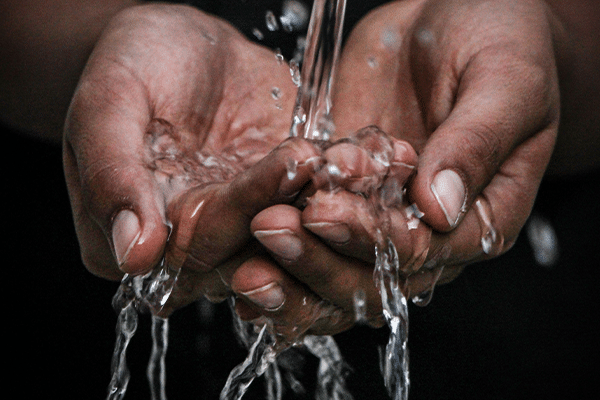Environmental toxins, or chemical pollutants, are chemicals that are found in the environment due to natural processes or pollution resulting from manufactured products and processes. Sometimes, they are called environmental chemicals since they are only toxic once they reach certain levels in the body and start affecting normal biological processes.
There are hundreds of chemicals in the environment that may have a toxic effect when they make their way into your body at levels that disrupt your natural biological processes. You are exposed to environmental toxicants through:
- The food you eat
- The beverages you drink
- The products you use
- The air you breathe
- The water you bathe or swim in
- The things you come in contact with
Some environmental toxins are naturally found in the environment, like lead, mercury, and formaldehyde. Others, like BPA, pesticides, and phthalates, are manufactured.
Environmental toxins, when they build up in your body at toxic doses, increase your risk of:
- Infertility or reproductive health issues
- Organ failure
- Cancer
- Developmental problems, especially in childhood
In this article, we have focused on the endocrine-disrupting environmental toxins and their effect on infertility and reproductive health issues. After introducing you to ten common endocrine-disrupting environmental toxins, we provide you with some tips on how you might use this information with clients interested in reducing their exposure to environmental toxins.

Get Your Free Guide
Learn How to Start a Fulfilling, Impactful Career as a Holistic Health Coach
You’ll learn:
- Why holistic health matters
- If holistic health coaching is right for you
- What career opportunities exist for health coaches
- And more!
How Environmental Toxins Affect Reproductive Health
There are hundreds of environmental toxins, and their effect on the body varies based on their chemical form, the levels of exposure, and the ability of the body to neutralize or eliminate them.
Some environmental toxins can mimic hormones. These environmental toxins are called endocrine-disrupting compounds (EDCs).
Unlike some other types of environmental toxins, most EDCs are not naturally found in the environment. EDCs are released into the environment in different ways, but the main sources include wastewater from the industrial sector, cleaning products, some processed foods, and household dust.
EDCs are similar in chemical structure to hormones that are naturally produced in the body. This means that they interact with proteins that transport hormones or they can disrupt, or even block, hormone metabolic pathways.
The most common environmental toxins can cause reproductive health problems by:
- Decreasing sperm count and quality
- Increasing the number of testicular germ cells
- Causing female and male breast cancer
- Causing cryptorchidism and hypospadias
- Increasing the risk for miscarriages
- Causing endometriosis
- Impairing fertility or causing infertility
- Causing irregularities of the menstrual cycle
10 Common Hormone-Disrupting Environmental Toxins
Bisphenol A (BPA)
Where they are found: Polycarbonate plastics, food storage containers, and paper receipts.
What to do about them: This is one of the best-known environmental toxins, so plastics industries have made an effort to produce BPA-free plastics. To avoid BPA exposure, choose metal, glass, or wood kitchen tools and wood children’s toys when possible. If you choose to purchase plastic products, make sure they are certified BPA-free, especially if they are food or drink containers or toys. Wash your hands thoroughly after touching receipts, and do not allow your receipts to come in contact with your food.
Phthalates
Where they are found: In soft, flexible plastics and as a byproduct of plastic production. They are commonly found in packaging, cosmetics, children’s toys, shower curtains, and medical devices.
What to do about them: Purchase cosmetics, children’s toys, and household products that are phthalate-free or made of wood. Choose products with minimal packaging and make sure to dispose of medical devices properly.
Polychlorinated bisphenols (PBCs)
Where they are found: They are a byproduct of electrical equipment production and are found in hydraulic fluids, heat transfer fluids (antifreeze and silicone-based fluids), lubricants, and chemicals used to soften plastic. They are largely produced as a byproduct of the construction, automotive, wire, and cable sectors.
What to do about them: PCBs take a long time to eliminate from the body, so it is important to avoid them when possible. Use proper protective gear when handling household cleaning products and construction materials. Test your water for PCBs regularly and report irregularities to the water management system.
Perfluorinated chemicals (PFAS)
Where they are found: Used in several industries, including firefighting foams; nonstick pans; paper; and coatings for textiles for clothes, furniture, and curtains.
What to do about them: Test your water regularly. If PFAs are found, it is important to report it to your municipal water management system. You can also filter your water, avoid nonstick pans, and store and dispose of household chemicals properly.
Organophosphate pesticides
Where they are found: Low-cost pesticides and insecticides. They are widely used in developing countries.
What to do about them: Switch out conventional foods with organic foods. Test your drinking water, and if organophosphate pesticides are found, it is important that your local water management system treats your water to remove them.
Dioxins
Where they are found: They are a byproduct of herbicide production and paper bleaching, and they are released into the air when garbage is burned or wildfires take place.
What to do about them: Like PCBs, dioxins take a long time to eliminate from the body. The best way to reduce them is by avoiding them altogether. Do not burn trash in or near your home and avoid bleached coffee filters and tea bags. Purchasing organic produce may also reduce exposure to dioxins.
Atrazine
Where they are found: One of the most commonly used herbicides worldwide, especially as weed control for corn and sugarcane crops.
What to do about them: Charcoal filters can help remove atrazine from the water. Consuming organic produce, instead of commercial produce, may be a way to reduce the ingestion of atrazine.
Perchlorate
Where they are found: A byproduct of aerospace weapon and pharmaceutical industries, but found in drinking water and put into the environment with the use of fireworks.
What to do about them: Test your drinking water for perchlorate. If found, it is important to reach out to your local water management agency to implement processes that break down perchlorate.
Lead
Where they are found: Lead released into the environment makes its way into the air, soil, and water, including the water we drink. Lead fuels contribute to air pollution. Lead pipes can contaminate the water that runs through them. Lead is also put into the environment from the mining and steel industries, when machinery is improperly stored or disposed of, and when batteries are improperly disposed of.
What to do about it: You can reduce lead in your drinking water by testing your drinking water, replacing lead pipes, using a water filter, and using only cold water for cooking and drinking. The EPA banned the use of leaded gasoline for cars in 1996, which is why some gas stations publicize “lead-free gas.” Additionally, purchase lead-free paint.
Mercury
Where they are found: Found naturally in the water and the atmosphere, and concentrations increase in areas where there are volcanoes, polluted oceans, and geologic deposits. It is also introduced as a byproduct of metal processing, incineration of coal, medical waste, and gold and mercury mining.
What to do about them: Avoid consuming larger fish that are likely high in mercury, such as tuna and swordfish. When possible, avoid metal fillings, which may contain mercury, or have old metal fillings replaced.
Who Is Most Vulnerable to Environmental Toxins?
Like with most health risks, exposure to environmental toxins has a disproportionate effect on certain populations. As stated in a recent study published in the International Journal of Gynecology and Obstetrics, “Exposure to toxic environmental chemicals and related health outcomes are inequitably distributed among populations within countries as well as between countries.”
For this reason, populations who are marginalized and affected by health disparities are also most at risk of being exposed to environmental toxins and having compromised immune systems.
Some of the populations that have a higher burden of toxic exposures and adverse health outcomes include:
- Indigenous peoples in Canada, the US, and Latin America
- Economically disadvantaged people
- Those living in low-income countries
- People who work or are regularly exposed to environmental solvents, pesticides, and heavy metals
- Black and Brown people
- Pregnant and breastfeeding women
Main Takeaways
From a coach’s perspective, you work with clients so that they feel empowered to make decisions that can improve their health. As you might have noticed from reading the common sources of environmental toxins, the greatest increases in concentrations come as a byproduct of industry practices.
Informing clients about the industries that are the greatest contributors of environmental toxins is the first step. Next, if they feel that they are at risk for the effects of or exposure to environmental toxins, you can help them navigate their options to modify purchase choices.
Nonetheless, the greatest changes have to take place at industry and public health levels. If reducing exposure to environmental toxins is something that is of interest to you, find out how you can get involved in community initiatives to reduce environmental pollution.

Get Your Free Guide
Learn How to Start a Fulfilling, Impactful Career as a Holistic Health Coach
You’ll learn:
- Why holistic health matters
- If holistic health coaching is right for you
- What career opportunities exist for health coaches
- And more!



